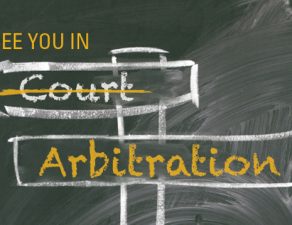A George Bailey “Hat Trick” – Et Tu, 9th Circuit?
Several months ago in this blog I described a “hat trick,” which is a hockey term for when a player scores three (or more) goals in one game. For those who have somehow eluded ever seeing the holiday classic “It’s a wonderful Life,” the other George is shown what the world would have been like if had never been born, and realizes the world is different – and better off – with him in it. Lately, I’ve had these George Bailey moments where I conclude that the world is different – and in a better way – because I was born. And it’s happened three times….
A-Rod to NLRB to Ninth Circuit
No, this is not an obscure baseball double-play combination. In January and February I wrote here that A-Rod would fail in his efforts to overturn the arbitration award against him arising out of alleged violations of baseball’s drug policy. As we know, A-Rod dropped his suit, leading me to muse that he must be reading my blog. Then, I blogged about the National Labor Relation Board’s (“NLRB”) quixotic determination to essentially ignore a decision of the United States Court of Appeals for the Fifth Circuit holding that class action waivers in arbitration clauses did not violate the National Labor Relations Act and were consistent with the Federal Arbitration Act. Lo and behold, the NLRB later decided it had better ask for a rehearing en banc, causing me to conclude that they, too, read my articles and such. And now, the third goal has been scored. It comes in the form of the Ninth Circuit’s just-released decision that essentially adopts a definition I proposed in an article I wrote last spring.
My Article
Last May, I penned an article, “Defining Who is a Customer in FINRA Arbitration: Time to Clear Things Up!” that was published in the Securities Arbitration Commentator. Without going into great detail, I can describe the article’s topic as follows. FINRA’s arbitration Code has a rule that says a broker has to arbitrate at the demand of a customer. An issue that naturally arises is “who is a customer”? Problem is, the arbitration rules define customer by describing what is not a customer. Specifically, the rule in question – Rule 12100(i) – states “a customer shall not include a broker or dealer.” This of course is a very broad definition, and has led to much litigation over who or what is a “customer” for arbitration purposes. I close the article with a proposed definition.
The Ninth Circuit
The “customer” issue was front and center in Goldman Sachs & Co. v. City of Reno, No. 15445 (Mar. 31, 2014). Specifically before the court was whether Reno, which was issuer of auction rate securities, was a customer of Goldman, which served as sole underwriter and broker-dealer. In reading the opinion, I was struck by the customer definition adopted by the Ninth Circuit:
Accordingly, we conclude that a “customer” is a non-broker and non-dealer who purchases commodities or services from a FINRA member in the course of the member’s FINRA-regulated business activities, i.e., the member’s investment banking and securities business activities.
This seemed very familiar, so I went back and reread my article. There I suggested that for purposes of arbitration a customer be defined as:
… one, not a broker or a dealer, who purchases commodities or services from a FINRA member in the course of the member’s business activities insofar as those activities are regulated by FINRA—namely investment banking and securities business activities.
My Conclusion
Now, the definitions are not identical, but the meaning is the same. And although I crafted my proposed definition borrowing from those articulated in other Circuit Court opinions, I choose to believe I had something to do with the Ninth Circuit’s definition If the court later challenges my belief, I can always claim this blog post was an April Fool’s Day prank!






